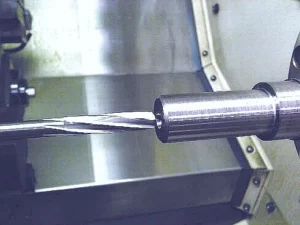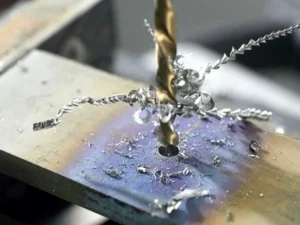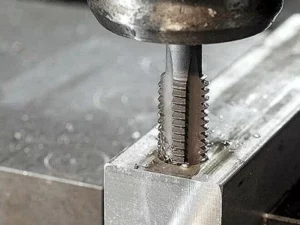CNC machining is a precise and efficient manufacturing technique that has revolutionized the production of complex parts. While milling and turning are the most commonly known CNC machining techniques, other essential processes include reaming, drilling, and tapping. In this article, we will discuss each of these techniques and their applications.
What is Reaming in CNC Machining?
Reaming is a process used to smooth and enlarge holes that have already been drilled. The primary goal of reaming is to achieve precise hole tolerances and surface finishes. The process involves the use of a tool called a reamer, which is designed to remove a small amount of material from the inside of the hole. Reaming is a common process in industries that require high-precision parts such as aerospace and medical.

Types of Reamers Used
Reamers used in CNC machining come in different shapes and sizes, each designed to achieve specific results. Straight-flute reamers are the most common type of reamer used in CNC machining. They have a single cutting edge that helps achieve an accurate diameter and smooth surface finish. Helical-flute reamers have multiple cutting edges that allow them to remove more material faster than straight-flute reamers. Diamond reamers, on the other hand, are used for finishing materials like ceramics, carbides, and composites.
Applications of Reaming
Reaming is used in CNC machining for various applications, including creating holes with precise diameters, improving the roundness of holes, and achieving smooth surface finishes. Reaming is also used to correct errors in hole locations, remove burrs, and create tapered holes.
What is Drilling in CNC Machining?
Drilling is one of the fundamental processes in CNC machining that involves creating a hole in a workpiece using a rotating cutting tool. The process is essential in creating simple holes, complex part geometries, and even holes with specific angles. Drilling is used in different industries, including automotive, aerospace, and medical.
Types of Drills Used
Various drills are used in CNC machining, depending on the application. Twist drills are the most common type of drill used in CNC machining. They are versatile and can create holes in various materials, including steel, aluminum, and plastic. Center drills are used to create accurate starting holes for other drill bits. Spot drills are used to create small indents on the surface of the material, making it easier to drill accurately.
Applications of Drilling
Drilling is used in CNC machining for various applications, including creating simple and complex holes, creating threaded holes, and tapping holes. The process is also used to create unique features such as countersinks, counterbores, and chamfers.
What is Tapping in CNC Machining?
Tapping is a CNC machining process that involves creating threaded holes in a workpiece. The process is achieved using a tool called a tap, which rotates and cuts threads into the walls of the hole. Tapping can be done by hand or using a CNC machine, depending on the complexity of the application.
Types of Taps Used
Various taps are used in CNC machining, including straight flute taps, spiral point taps, and spiral flute taps. Straight flute taps are used for soft materials such as aluminum, while spiral point taps are used for hard materials like steel. Spiral flute taps are used for deep hole tapping because they help remove chips from the hole efficiently.
Applications of Tapping
Tapping is used in CNC machining to create threaded holes for screws, bolts, and other fasteners. The process is used in various industries, including automotive, aerospace, and medical.
Conclusion
CNC machining is a precise and efficient manufacturing technique that has revolutionized the production of complex parts. Reaming, drilling, tapping, milling, and turning are essential processes in CNC machining that are used in various industries. Understanding these processes and selecting the right tools and techniques is crucial to achieving high-quality parts. By employing proper toolpath planning, CNC machinists can optimize each process to create the best results for their application.

